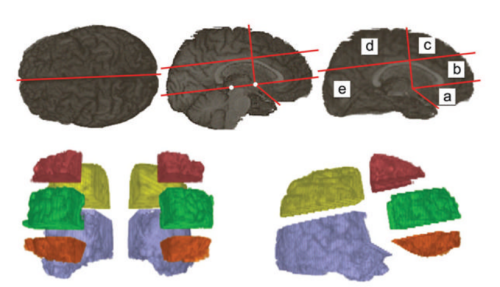White matter lesions impair frontal lobe function regardless of their location

Abstract
Objective
To analyze the effect of white matter lesions in different brain regions on regional cortical glucose metabolism, regional cortical atrophy, and cognitive function in a sample with a broad range of cerebrovascular disease and cognitive function.
Methods
Subjects (n = 78) were recruited for a study of subcortical ischemic vascular disease (SIVD) and Alzheimer disease (AD) contributions to dementia. A new method was developed to define volumes of interest from high-resolution three-dimensional T1-weighted MR images. Volumetric measures of MRI segmented white matter signal hyperintensities (WMH) in five different brain regions were related to regional PET glucose metabolism (rCMRglc) in cerebral cortex, MRI measures of regional cortical atrophy, and neuropsychological assessment of executive and memory function.
Results
WMH was significantly higher in the prefrontal region compared to the other brain regions. In all subjects, higher frontal and parietal WMH were associated with reduced frontal rCMRglc, whereas occipitotemporal WMH was only marginally associated with frontal rCMRglc. These associations were stronger and more widely distributed in nondemented subjects where reduced frontal rCMRglc was correlated with WMH for all regions measured. In contrast, there was no relationship between WMH in any brain region and rCMRglc in either parietal or occipitotemporal regions. WMHs in all brain regions were associated with low executive scores in nondemented subjects.
Conclusions
The frontal lobes are most severely affected by SIVD. WMHs are more abundant in the frontal region. Regardless of where in the brain these WMHs are located, they are associated with frontal hypometabolism and executive dysfunction.
